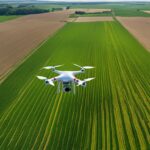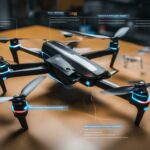Throughout the annals of aviation, the history of drones serves as a testament to the relentless march of technological progress. These unmanned aircraft, guided by remote control or onboard computers, have become indispensable tools in both civilian and military operations.
From the daring exploits of early pioneers to the cutting-edge capabilities of today, the evolution of drones has revolutionized industries such as climate monitoring, goods delivery, and search and rescue.
However, as we delve into the intricate tapestry of their past, it is crucial to examine the complex ethical considerations that accompany these aerial marvels.
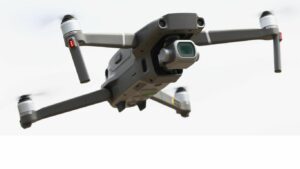
Key Takeaways:
- Drones have a long history, dating back to 1849 when unmanned balloons were used as weapons.
- Military drone technology developed during World War I, with the Ruston Proctor Aerial Target and radio-controlled aircraft.
- Drones have both civilian and military applications, with civilian uses including climate monitoring and goods delivery.
- The development of drones has seen significant milestones, including the use of drones with cameras in the Vietnam War and the introduction of mini- and micro-versions of UAVs.
Introduction
Drones, also known as unmanned aircraft, have become an integral part of modern society. They have a long history that dates back to the early 1900s, with various milestones and advancements along the way.
Today, drones have found applications in both civilian and military fields, playing a crucial role in areas such as climate monitoring, goods delivery, search and rescue operations, and filming.
The evolution of drone technology has brought about numerous possibilities and concerns, shaping the future of this technology and its impact on various industries.
What is a drone?
A drone is an unmanned aircraft or ship that is guided by remote control or onboard computers. Drones can be controlled remotely or operate autonomously through software-controlled flight plans. They are essentially flying robots that work in conjunction with onboard sensors and GPS.
In technological terms, drones are considered unmanned aircraft. The concept of drones dates back to 1849 when Austria attacked Venice with unmanned balloons filled with explosives. In the early 1900s, the Bréguet brothers developed an early example of a quadcopter, demonstrating the potential for flight but requiring further technological development.
Today, drones have found applications in various fields, such as climate monitoring, goods delivery, search and rescue operations, and filming. They have become an integral part of both civilian and military operations, with the number of drones in private use surpassing the military’s fleet.
Brief overview of the history of drones, from the early 1900s to the present day
From the early 1900s to the present day, the history of drones has been marked by significant advancements and innovations in both military and civilian applications.
In the early 1900s, the Bréguet brothers developed an early example of a quadcopter, showcasing the potential for flight.
During World War I, the Ruston Proctor Aerial Target and the Kettering Bug were developed, demonstrating the military’s interest in pilotless drones.
In the 1930s, the U.S. Navy and the British further explored the use of radio-controlled aircraft. The Radioplane OQ-2 became the first mass-produced UAV product in the U.S.
Throughout the years, drones have found civilian applications in fields such as climate monitoring, goods delivery, search and rescue operations, and filming.
The development of drone technology continued to evolve, leading to the introduction of mini- and micro-UAVs, and the famous Predator drone.
Today, drones have become an integral part of both civilian and military operations, with a surge in innovation, commercial interest, and advancements in technology.
Importance of drones in modern society
With their ability to revolutionize various industries and transform aspects of life, drones have become increasingly important in modern society.
The impact of drones can be seen in fields such as agriculture, where they are used for crop monitoring and spraying pesticides, improving efficiency and reducing costs.
In the construction industry, drones are utilized for surveying and inspecting sites, enhancing safety and accuracy.
Drones also play a crucial role in disaster management and search and rescue operations, as they can reach inaccessible areas and provide real-time aerial footage.
Additionally, drones have transformed the filmmaking and photography industries, enabling unique perspectives and capturing breathtaking shots.
Furthermore, the delivery sector has been revolutionized by the use of drones, allowing for faster and more efficient delivery of goods.
As drones continue to evolve and improve, their importance in modern society will only continue to grow, shaping the way we live and work.
Early development of drones
During the early development of drones, significant advancements were made in the years leading up to World War I, during the war itself, and in the interwar period.
In 1849, Austria attacked Venice with unmanned balloons filled with explosives, marking an early concept of drones.
The Bréguet brothers developed an early quadcopter design in the early 1900s, demonstrating the potential for flight and paving the way for further technological development.
Pre-World War I
During the pre-World War I era, early attempts at unmanned flight were made, laying the foundation for the development of drones.
In 1849, Austria attacked Venice using unmanned balloons filled with explosives, marking the first recorded use of drones in warfare.
Additionally, the Bréguet brothers developed an early example of a quadcopter in the early 1900s, demonstrating the potential for flight but requiring further technological advancement.
Early attempts at unmanned flight
Several inventors and engineers made significant contributions to the early development of drones before World War I.
In the early 1900s, the Bréguet brothers developed an early example of a quadcopter, which demonstrated the potential for flight but required further technological development.
Additionally, Archibald Low developed a radio guidance system for pilotless military drones, while the U.S. Army experimented with gyroscopic controls and radio-controlled aircraft.
These early attempts at unmanned flight laid the foundation for future advancements in drone technology.
First successful unmanned aircraft
The Ruston Proctor Aerial Target, developed in 1916 during World War I, marked the first successful unmanned aircraft in the early development of drones. It was designed to be used as a target for anti-aircraft gunners to practice their aim.
The Aerial Target was a biplane with a wingspan of 16 feet and was powered by a 35-horsepower engine. It was remotely controlled by an operator on the ground and had the ability to fly up to an altitude of 10,000 feet.
The success of the Ruston Proctor Aerial Target paved the way for further advancements in unmanned aircraft technology.
World War I
During World War I, drones were first utilized for target practice and reconnaissance purposes. The Ruston Proctor Aerial Target, developed in 1916, was one of the earliest examples of a military drone.
Additionally, Archibald Low’s radio guidance system played a crucial role in the advancement of pilotless military drones.
These developments laid the foundation for the future use of drones in warfare and marked a significant milestone in the early development of this technology.
Use of drones for target practice and reconnaissance
In the early stages of drone development during World War I, drones were utilized for target practice and reconnaissance purposes. The Ruston Proctor Aerial Target, developed in 1916, was one of the early examples of military drones.
Archibald Low also played a significant role by developing a radio guidance system for pilotless military drones.
These early drones paved the way for future advancements in drone technology, setting the stage for their widespread use in both civilian and military applications.
Interwar period
During the interwar period, the development of drone technology continued, paving the way for their future use in combat.
This period saw significant advancements in radio guidance systems, with Archibald Low’s invention and the experimentation of radio-controlled aircraft by the U.S. Army and Navy.
Additionally, the Ruston Proctor Aerial Target and the Queen Bee target drone were developed, further demonstrating the potential of unmanned aircraft in military applications.
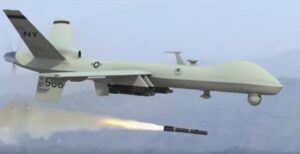
Continued development of drone technology
The early development of drones during the interwar period witnessed significant advancements in drone technology, laying the foundation for future innovations in unmanned aerial vehicles.
During this time, the Ruston Proctor Aerial Target was developed for military use, and radio-controlled aircraft experimentation took place in both the United States and Britain.
Additionally, the Radioplane OQ-2 became the first mass-produced UAV product in the U.S.
These developments paved the way for the continued progress and expansion of drone technology.
First use of drones in combat
The introduction of drones in combat during the interwar period showcased the potential for unmanned aerial vehicles to revolutionize military operations.
- The Ruston Proctor Aerial Target was developed in 1916.
- Archibald Low developed a radio guidance system for pilotless military drones.
- The U.S. Army experimented with radio-controlled aircraft.
- The U.S. Navy also experimented with radio-controlled aircraft in the 1930s.
- The British developed the Queen Bee, a radio-controlled target drone.
- The Radioplane OQ-2 became the first mass-produced UAV product in the U.S.
Drones in World War II
During World War II, the development of more advanced drones played a significant role in military operations. Drones were utilized for various purposes, including reconnaissance missions, bombing runs, and even kamikaze attacks.
These unmanned aircraft provided valuable intelligence, increased the effectiveness of airstrikes, and demonstrated the potential for autonomous warfare.
Development of more advanced drones
As World War II unfolded, advancements in military technology led to the development of more advanced drones, which played a significant role in reconnaissance and combat operations. These developments included:
- Target drones: Drones were used as target practice for anti-aircraft gunners to improve their accuracy and effectiveness.
- Photo-reconnaissance drones: Drones equipped with cameras were deployed to gather crucial intelligence by capturing aerial photographs of enemy territory.
- Combat drones: Drones were used for offensive purposes, carrying explosives, and used to attack enemy targets.
These advancements in drone technology during World War II laid the foundation for future advancements in the field.
The drones used in this era paved the way for the modern military drones we see today, with their ability to gather intelligence, carry out targeted strikes, and reduce risks to human lives in combat situations.
Use of drones for a variety of purposes, including reconnaissance, bombing, and kamikaze attacks
Numerous drones were utilized for reconnaissance, bombing, and kamikaze attacks during World War II. The development of drones during this time allowed for new strategies and tactics to be employed.
Drones were used by various countries for reconnaissance missions, providing valuable intelligence on enemy positions and movements.
Additionally, drones were armed with bombs and used for bombing missions, targeting enemy infrastructure and military installations.
Kamikaze drones, also known as ‘suicide drones,’ were specifically designed to be flown into enemy targets, sacrificing the drone and its operator in the process.
These drones played a significant role in the war, providing a new level of efficiency and effectiveness in military operations.
The use of drones in World War II laid the foundation for the future development and utilization of drones in warfare.
Drones in the Cold War
During the Cold War, both the United States and the Soviet Union continued to develop drone technology for surveillance and reconnaissance purposes. These advancements were driven by the need to gather intelligence on each other’s military activities without risking human lives.
The use of drones in the Cold War marked a significant milestone in the evolution of unmanned aerial vehicles, setting the stage for their widespread use in both civilian and military applications in the years to come.
Continued development of drone technology, particularly by the United States and the Soviet Union
The United States and the Soviet Union played pivotal roles in the continued development of drone technology during the Cold War.
- The United States focused on the development of surveillance drones, such as the Ryan Model 147, which was used for reconnaissance missions over Vietnam. The Ryan Model 147, also known as the Lightning Bug, was equipped with cameras to capture images of enemy territory. The United States also developed the AQM-34 Firebee, a high-altitude reconnaissance drone that could be launched from an aircraft and recoverable by parachute. The US Navy developed the Regulus I cruise missile, which was remotely controlled and paved the way for future drone technology.
- The Soviet Union, on the other hand, focused on the development of combat drones. The Yakovlev Pchela, introduced in the 1960s, was a reconnaissance drone used for aerial photography and intelligence gathering. The Soviet Union also developed the Tu-123 ‘Yastreb’, a long-range reconnaissance drone capable of carrying a nuclear weapon. The Soviet Union’s development of combat drones laid the foundation for modern military drone technology.
- Both countries continued to push the boundaries of drone technology during the Cold War, leading to advancements in intelligence gathering, surveillance, and combat capabilities. Their contributions during this period paved the way for the widespread use of drones in various fields today.
Use of drones for surveillance and reconnaissance
Significantly, the use of drones for surveillance and reconnaissance played a crucial role in the Cold War era. Both the United States and the Soviet Union employed drones extensively to gather intelligence and monitor their respective adversaries.
These drones, often referred to as unmanned aerial vehicles (UAVs), were equipped with cameras and other sensors to capture valuable information without risking human lives. The US developed the Lockheed U-2, a high-altitude reconnaissance aircraft, whereas the Soviet Union deployed the Tupolev Tu-95, a long-range strategic bomber, for surveillance purposes.
These drones provided real-time imagery and data, allowing both sides to monitor military activities, gather information on enemy assets, and assess potential threats.
The use of drones for surveillance and reconnaissance during the Cold War marked a significant advancement in intelligence-gathering capabilities and paved the way for the development of modern-day drone technology.
Drones in the post-Cold War era
In the post-Cold War era, there was a significant development in drone technology with the introduction of smaller, more affordable drones.
This led to an increased use of drones for commercial and recreational purposes.
Additionally, drones played a significant role in military conflicts such as the Gulf War and the War on Terror, where they were utilized for surveillance, reconnaissance, and targeted strikes.
Development of smaller, more affordable drones
How did the post-Cold War era contribute to the development of smaller, more affordable drones?
- Advancements in technology: The post-Cold War era witnessed rapid advancements in technology, particularly in the fields of microelectronics and miniaturization. These advancements allowed for the development of smaller and more compact components, making it possible to create drones that were smaller in size and lighter in weight.
- Commercialization of drone technology: The end of the Cold War led to a shift in focus from military applications to civilian and commercial uses of drones. This shift in focus resulted in increased investment and research in drone technology, leading to the development of more affordable drones that could be used by a wider range of users.
- Integration of consumer electronics: The post-Cold War era saw the widespread adoption of consumer electronics such as smartphones and digital cameras. These consumer electronics provided essential components for drones, such as GPS systems, cameras, and sensors, at a lower cost. The integration of these components into drones contributed to the development of more affordable and accessible drone technology.
Increased use of drones for commercial and recreational purposes
The proliferation of drones for commercial and recreational purposes has been a noteworthy development in the post-Cold War era.
In recent years, there has been a significant increase in the use of drones for various commercial applications. Companies are utilizing drones for tasks such as aerial photography and videography, inspection of infrastructure and facilities, agricultural monitoring, and delivery services. The ability of drones to access difficult-to-reach areas and capture high-quality imagery has revolutionized industries such as filmmaking, real estate, and agriculture.
Additionally, drones have become increasingly popular among hobbyists and enthusiasts for recreational purposes. People are using drones for aerial photography, racing, and simply enjoying the thrill of flying a remote-controlled aircraft.
The advancement of technology has made drones more accessible, affordable, and user-friendly, contributing to their widespread use in both commercial and recreational settings.
Use of drones in military conflicts, such as the Gulf War and the War on Terror
During the Gulf War and the War on Terror, drones played a significant role in military conflicts.
- Surveillance: Drones were used extensively for reconnaissance and intelligence-gathering purposes. They provided real-time video footage and aerial imagery, allowing military forces to monitor enemy movements and identify targets.
- Targeting and Strikes: Armed drones, such as the Predator and Reaper, were used to carry out targeted strikes on enemy positions. These drones were equipped with precision-guided missiles and bombs, enabling accurate and effective attacks on high-value targets.
- Force Protection: Drones were employed to enhance force protection by providing overwatch and security for ground troops. They could monitor and assess potential threats, providing early warning and situational awareness.
- Advantages: The use of drones in military conflicts offers several advantages, including reduced risk to human lives, extended endurance for long-duration missions, and the ability to operate in environments where manned aircraft may be limited.
- Challenges: However, the use of drones also posed challenges, such as the need for skilled operators, the potential for collateral damage, and concerns over privacy and ethical implications.
The future of drones
The future of drones holds promising advancements in technology, with emerging trends such as autonomous drones and artificial intelligence.
These developments have the potential to revolutionize various industries and expand the applications of drones in the future.
From delivery services to aerial surveillance, the possibilities for drones are vast and continue to grow as advancements continue to be made.
Emerging trends in drone technology, such as autonomous drones and artificial intelligence
One of the emerging trends in drone technology is the integration of artificial intelligence, which has the potential to revolutionize the capabilities and autonomy of drones. This integration allows drones to perform complex tasks and make decisions without human intervention, increasing their efficiency and effectiveness.
Some of the key developments in this area include:
- Autonomous Navigation: Drones equipped with artificial intelligence can navigate through obstacles, adjust their flight paths, and avoid collisions on their own. This enables them to operate in dynamic environments and perform tasks with precision.
- Intelligent Object Recognition: Artificial intelligence enables drones to identify and track objects of interest, such as vehicles, buildings, or individuals, using advanced computer vision algorithms. This capability is particularly useful in surveillance, search and rescue, and inspection applications.
- Intelligent Mission Planning: Drones with artificial intelligence can analyze data and make intelligent decisions to optimize their flight paths and mission objectives. They can adapt to changing conditions and prioritize tasks based on real-time information, enhancing their overall operational efficiency.
The integration of artificial intelligence into drone technology is opening up new possibilities and expanding the capabilities of these unmanned aircraft. As advancements continue, we can expect to see even more sophisticated and intelligent drones that can perform a wide range of tasks with increased autonomy and precision.
Potential applications of drones in the future
As technology continues to advance, the possibilities for drones to revolutionize various industries and enhance efficiency are boundless. In the future, drones are expected to have a significant impact on fields such as agriculture, construction, transportation, and healthcare.
In agriculture, drones can be used for crop monitoring, precision spraying of fertilizers and pesticides, and even pollination.
In construction, drones can assist in surveying, inspecting structures, and monitoring construction sites.
In transportation, drones have the potential to revolutionize the delivery industry by enabling fast and efficient delivery of goods.
In healthcare, drones can be used for emergency medical supply delivery, remote patient monitoring, and even as a means of transportation for organs in transplant procedures.
These potential applications demonstrate the immense value that drones can bring to various industries in the future.
The impact of drones on society
Drones have had a significant impact on society, with both positive and negative implications.
On the positive side, drones have been used for disaster relief efforts, providing crucial assistance in search and rescue operations and delivering supplies to remote areas.
Additionally, drones have played a vital role in conservation efforts, allowing researchers to monitor wildlife and track environmental changes.
However, there are also negative impacts, such as concerns over privacy and surveillance, as well as the use of drones in warfare.
The use of drones in society continues to evolve, raising important ethical and practical considerations.
Positive impacts, such as the use of drones for disaster relief and conservation
The utilization of drones for disaster relief and conservation has had a significant positive impact on society. Here are three ways in which drones have contributed to these areas:
- Disaster Relief:
- Drones can quickly assess damage after natural disasters, providing real-time imagery and data that aid in rescue and recovery efforts.
- They can deliver critical supplies, including medical equipment and food, to remote and inaccessible areas.
- Drones equipped with thermal imaging cameras can help locate survivors in disaster zones, increasing the chances of successful rescue operations.
- Conservation:
- Drones are used to monitor and protect wildlife, helping to combat illegal poaching and track endangered species.
- They can survey and map large areas of land, aiding in conservation efforts and resource management.
- Drones equipped with sensors and cameras can monitor environmental conditions, such as air and water quality, contributing to scientific research and conservation initiatives.
Negative impacts, such as the use of drones for surveillance and warfare
Surveillance and warfare have resulted in significant negative impacts on society due to the utilization of drones.
The use of drones for surveillance purposes raises concerns regarding privacy and civil liberties. Drones equipped with cameras and advanced surveillance technology can collect vast amounts of data, potentially violating the privacy of individuals and communities.
In addition, the deployment of armed drones in warfare has raised ethical questions. The use of remote-controlled weaponry raises concerns about civilian casualties and the potential for abuse.
The increasing reliance on drones in military operations has also led to a shift in warfare tactics, with a focus on remote engagement rather than direct combat. This has implications for the nature of warfare, potentially dehumanizing the act of killing and reducing the accountability of military actions.
The ethics of drones
The ethics of drones encompass a range of concerns.
Privacy is a major issue, as drones equipped with cameras can invade personal spaces and capture sensitive information.
Safety is another concern, as drones can pose risks to both people and property if not operated responsibly.
The use of drones for lethal purposes raises ethical questions surrounding the decision-making process and potential civilian casualties in military operations.
Issues such as privacy, safety, and the use of drones for lethal purposes
Discussing the ethics of drones involves examining the implications of their use in relation to privacy, safety, and the potential for lethal purposes.
Privacy concerns: Drones equipped with cameras and sensors can invade individuals’ privacy by capturing images or collecting personal data without consent. This raises questions about surveillance and the protection of civil liberties.
Safety risks: Drones flying in airspace shared with manned aircraft pose safety risks, including the potential for collisions. There have been incidents of drones interfering with firefighting operations and endangering public safety. Regulations and measures are being implemented to mitigate these risks.
Lethal applications: The use of drones for lethal purposes, such as targeted killings or military strikes, raises ethical questions. The ability to remotely operate armed drones raises concerns about accountability, civilian casualties, and the potential for misuse.
It is crucial to address these ethical issues to ensure responsible and beneficial use of drone technology.
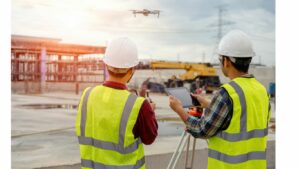
Different types of drones and their applications
Different types of drones serve various purposes in both civilian and military applications.
Civilian drones, such as hobby and commercial drones, are commonly used for activities like aerial photography, delivery services, and search and rescue operations.
On the other hand, military drones have a range of functions, including surveillance and reconnaissance missions, as well as more aggressive roles like targeted attacks.
The different types of drones and their applications highlight the versatility and potential of this technology in various fields.
Civilian drones (e.g., hobby drones, commercial drones)
Civilian drones have revolutionized industries and transformed various aspects of life through their diverse applications and capabilities. These drones, including hobby drones and commercial drones, have opened up new possibilities and opportunities.
Here are some of the different types of civilian drones and their applications:
- Hobby Drones:
- Photography and videography: Hobby drones equipped with high-resolution cameras allow enthusiasts to capture stunning aerial shots and videos.
- Racing: Drone racing has gained popularity as a thrilling sport, with hobbyists competing in high-speed races through obstacle courses.
- Aerial mapping: Hobby drones can be used to create detailed maps and 3D models of landscapes or buildings.
- Commercial Drones:
- Delivery services: Companies like Amazon and UPS are exploring the use of drones for delivering packages quickly and efficiently.
- Agriculture: Drones equipped with multispectral sensors can provide farmers with valuable data on crop health and growth, helping optimize farming practices.
- Inspections and surveys: Commercial drones can inspect infrastructure, such as bridges and power lines, or conduct surveys in hard-to-reach areas, improving safety and efficiency.
Civilian drones continue to evolve, offering endless possibilities and contributing to advancements in various industries.
Military drones (e.g., surveillance drones, attack drones)
The utilization of military drones, both for surveillance and attack purposes, has significantly transformed modern warfare.
Surveillance drones, also known as unmanned aerial vehicles (UAVs), play a crucial role in gathering intelligence and conducting reconnaissance missions. Equipped with advanced imaging technology and sensors, these drones can monitor enemy activities, identify targets, and provide real-time situational awareness to military forces.
On the other hand, attack drones, such as the infamous Predator and Reaper drones, have the capability to strike targets with precision-guided missiles. These drones have revolutionized the concept of warfare by allowing remote strikes, reducing the risk to human lives, and providing extended reach in inaccessible areas.
Moreover, military drones have been used for other applications, including electronic warfare, communication relays, and cargo transportation, further enhancing their value on the battlefield.
Conclusion
In conclusion, the history of drones showcases the remarkable advancements in aviation technology. From their early development and military applications in World War II to their widespread civilian use today, drones have revolutionized various industries.
However, their increasing capabilities have raised ethical concerns regarding privacy, safety, and remote weaponry. Despite these challenges, the drone industry continues to grow at an exponential rate.
As of 2020, it is estimated that there are over 1.7 million drones registered with the Federal Aviation Administration in the United States alone, highlighting the significant impact these aerial marvels have on society.





